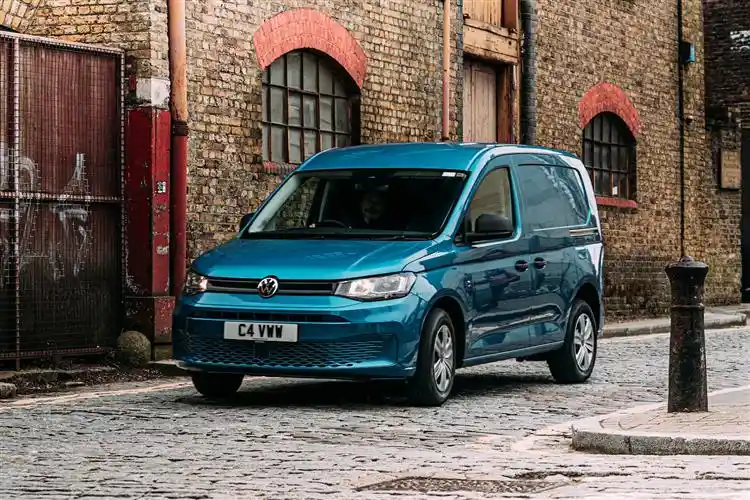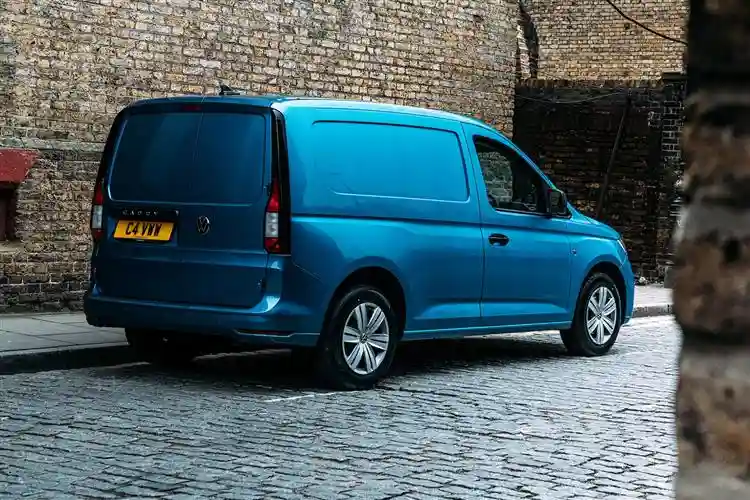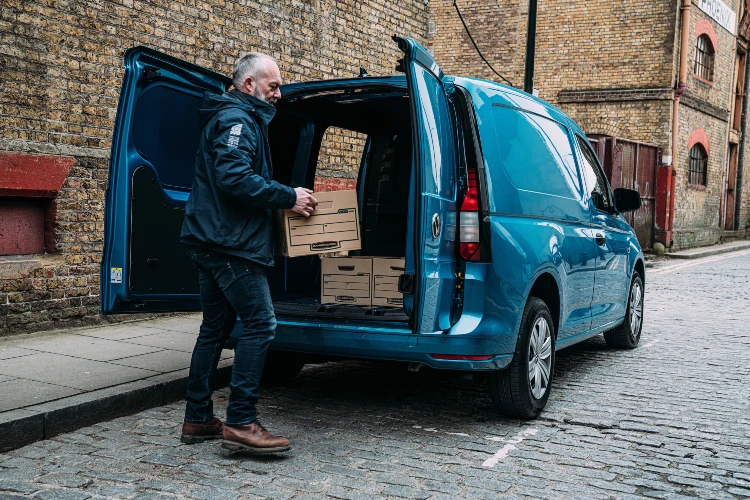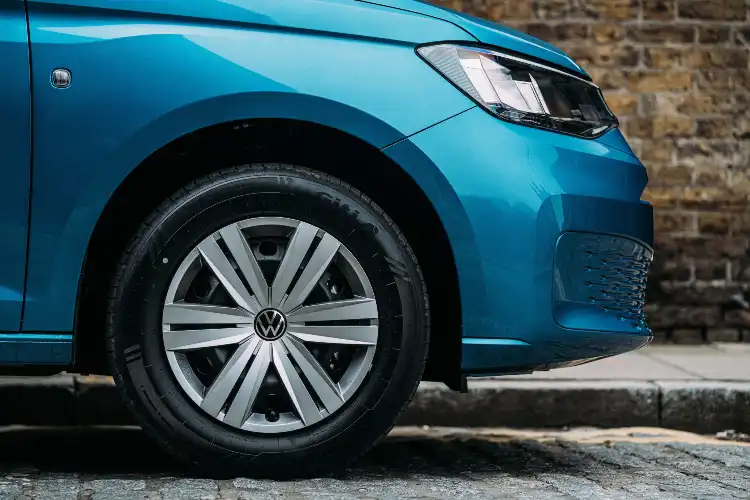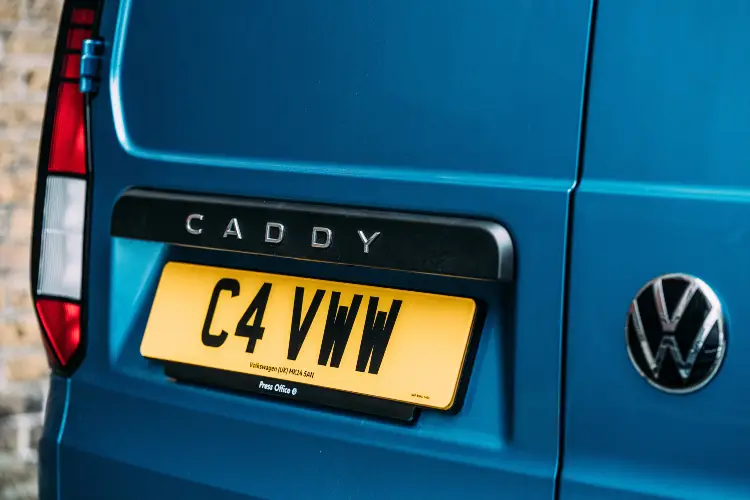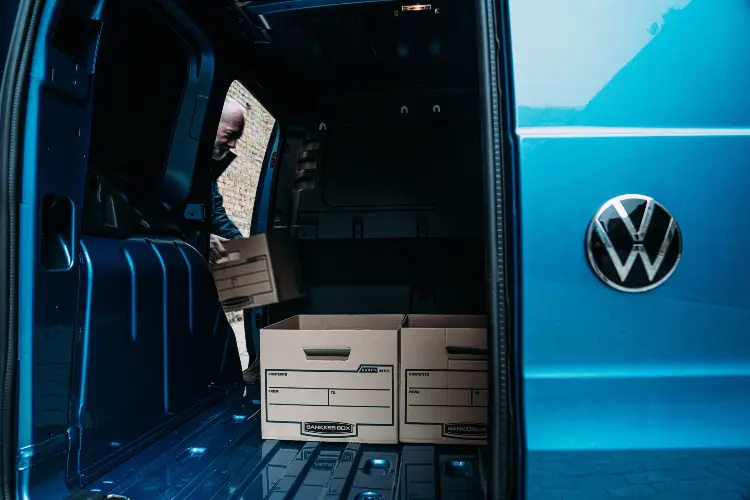By Tom Roberts
The fifth generation of the Volkswagen Caddy small van is up against some formidable competition in its sector. Has Volkswagen done enough to compete with the likes of Ford, Renault and the Stellantis group? Vanarama Van Expert Tom Roberts takes a deep dive into the light van contender from the famous German manufacturer and discovers that, even with an odd feature or two, Volkswagen has done an extremely good job.
The Fifth Generation – which sounds like the name of a cheesy 70’s pop group - is what Volkswagen calls the latest version of the Caddy. The very first, launched in 1979 was actually a small pickup truck based on the Polo car. It wasn’t until 1995 that the van appeared, still based on the Polo but with an oversized rear to accommodate loads of a reasonable size.
When the third generation appeared in 2003, we finally saw a van that looked like a Caddy. Now based on the Golf platform, it proved incredibly popular and received a substantial facelift in 2010. Although Volkswagen likes to refer to the 2015 facelift as generation four, in reality the updates probably weren’t substantial enough to warrant anything more than a 3.5.
Caddy isn’t just a van - while we’re concentrating here on the load-carrying version (hence the ‘Cargo’ moniker) - it is also produced as a passenger car, competing directly against the Ford Transit Connect Tourneo and called ‘Caddy Life’.
The light van sector is a very competitive place right now - Caddy Cargo is up against some seriously good vans. The Stellantis Group offerings (Citroen Berlingo, Vauxhall Combo, Peugeot Partner and Toyota Proace City) has won multiple awards, and the recently-launched Renault Kangoo (and its platform-sharing siblings from Nissan and Mercedes-Benz) collected the coveted International Van of the Year award for 2021. Not to mention the incredibly successful Ford Transit Connect.
What’s New On Generation Five Of The VW Caddy Cargo?
This is a huge update from the previous version, now based on what Volkswagen calls the MQB platform (the base on which most of the company’s passenger cars are designed). It has a new exterior, a redesigned cab, new engines, suspension and loads of new tech. The term ‘all-new’ is often overused by manufacturers who can sometimes be a little bit too enthusiastic when marketing their new product, but in the Caddy’s case the description looks to be pretty accurate.
What Does The New VW Caddy Cargo Look Like?
It might not be the first thing that grabs your attention, but the new Caddy Cargo is wider, longer and lower than its predecessor - although this isn’t necessarily reflected in the loadspace dimensions. The van has a clean, uncluttered look and naturally it boasts the very latest grille and headlight combination as featured on many Volkswagen passenger cars. It’s claimed that the new van is more aerodynamic than the older version, and that’s easy to believe - Caddy Cargo is a very streamlined bit of kit.
What Engines Does The New VW Caddy Cargo Use?
Firstly, there are currently no hybrid or electric versions of the VW Caddy Cargo. Plans are unclear at this stage, but as soon as we hear any updates we’ll let you know. At present, you’ve a choice of 102PS or 122PS versions of a new 2.0-litre TDi diesel engine, or if petrol is your bag Volkswagen has you covered with a 1.5-litre TSi unit producing 114PS. Previously the company has been a little inconsistent with petrol engine availability for its van range in the UK - on more than one occasion the option being withdrawn then reintroduced at a later date, only to disappear again. One to watch, maybe.
A 6-speed manual gearbox can be substituted for a 7-speed version of the legendary, dual clutch DSG automatic transmission (not available with the lower-powered diesel engine), and there’s also the 4MOTION all-wheel-drive option offered with the 122PS diesel in manual transmission form.
The most economical Caddy Cargo vans are the diesel-powered ones coupled to the manual transmission, with official figures of up to 57.6 mpg. Even the petrol Caddy with the DSG transmission comes out at a very credible 42.2 mpg.
What Payloads Can The VW Caddy Cargo Carry?
There are just the two body derivatives to choose from, the SWB and the Maxi. Compared to the previous Caddy, the SWB has a slightly longer load length, although the Maxi is a touch shorter. The lower load floor has allowed the designers to offer a taller load area, despite the external height also being reduced (and improving the aerodynamics).
In numbers for the SWB van (and Maxi figures in brackets), the load length is 1797mm (2150mm), width 1614mm (same) and height 1272mm (1275mm). These measurements translate into a load volume of 3.1 cubic metres (3.7cu/m).
There’s one important difference between the two models when it comes to loadspace access. The sliding side doors on the Maxi (you get two as standard on this longer model) are wider than on the SWB, and (crucially for some) this allows an 800mm x 1200mm Europallet to be loaded from the side and an additional one from the rear. If you’re planning on using pallets, you’d be wise to keep the standard twin rear door arrangement rather than the optional tailgate as these and fork lift trucks don’t gel together too well.
Perhaps one area where Volkswagen could up its game is with payloads. The best Caddy can manage is 711kgs and, although that may well be plenty for many van operators, others may be attracted to vans in the sector which can carry around 1000kgs. If you need to tow, Caddy will accommodate a braked trailer of up to 1500kg, depending on the model.
What Trim Levels, Specification & Equipment Does The VW Caddy Cargo Offer?
There are three levels of trim offered with Caddy Cargo. Entry level Commerce gets a 6.5-inch colour touchscreen with a DAB+ radio and Bluetooth connectivity. Cruise control and electric windows aid the driver, but where the basic Caddy Cargo scores is with safety tech. The list is almost too long to put here, but Automatic Post-Collision braking, Driver Alert, eCall emergency system, Front Assist with Pedestrian Monitoring, City Emergency Braking System and Electronic Brakeforce Distribution are all included as standard.
Move up to Commerce Plus and you’ll find air conditioning in the cab, together with upgraded seats and a leather-trimmed multi-function steering wheel. Outside you get body-coloured bumpers that set the Commerce Plus apart, and rear parking sensors help to keep the back bumper safe.
For the ultimate Caddy Cargo, there’s the Commerce Pro. On the outside there are silver alloy wheels together with some more painted items, such as door handles and mirror housings. Front parking sensors are added, as are LED tail lights and a heated windscreen. Inside the van, the multimedia screen is increased in size to 10 inches and now includes satellite navigation. The seats now have armrests, and the door mirrors are heated and power folding.
What Is The VW Caddy Cargo’s Cab Environment Like?
With an all-new dash dominated by the multimedia screen, which is nicely angled towards the driver, the cab interior has had a substantial makeover with a striking angular theme. In-cab storage is reasonably generous with good-sized door bins, a lidded centre console, dash top trays and a neat overhead shelf.
Once behind the wheel, it’s impossible not to notice the lack of physical switches and knobs with many operations being managed via the touchscreen - this being a deliberate change in policy from Volkswagen. It takes a little getting used to, in particular adjusting the temperature level from the heating and air conditioning, which involves entering the climate mode then moving a small ‘slider’ on the screen to change the ambient air temperature - not particularly easy when driving.
There’s no doubt though that the ‘no knob’ policy makes the dash look clean, uncluttered and sophisticated, and the screen itself is very clear with no unwanted glare or reflections.
Tom’s Takeaways
The New VW Caddy Cargo feels more like a quality car than a van. That’s my one outstanding impression of the Caddy Cargo. The 3 trim levels are fairly specced, and there’s a long options list too (if the standard offerings aren't quite to your liking). Possibly the one weak point is the relatively-low payload, but as many light van operators don’t need to carry a tonne this shouldn’t restrict sales too much. It’s a fine vehicle, and if I needed a light van it would be right at the top of my shopping list.
Fancy leasing one? Pop over to the Vanarama Volkswagen Caddy leasing page for the best lease deals anywhere.

